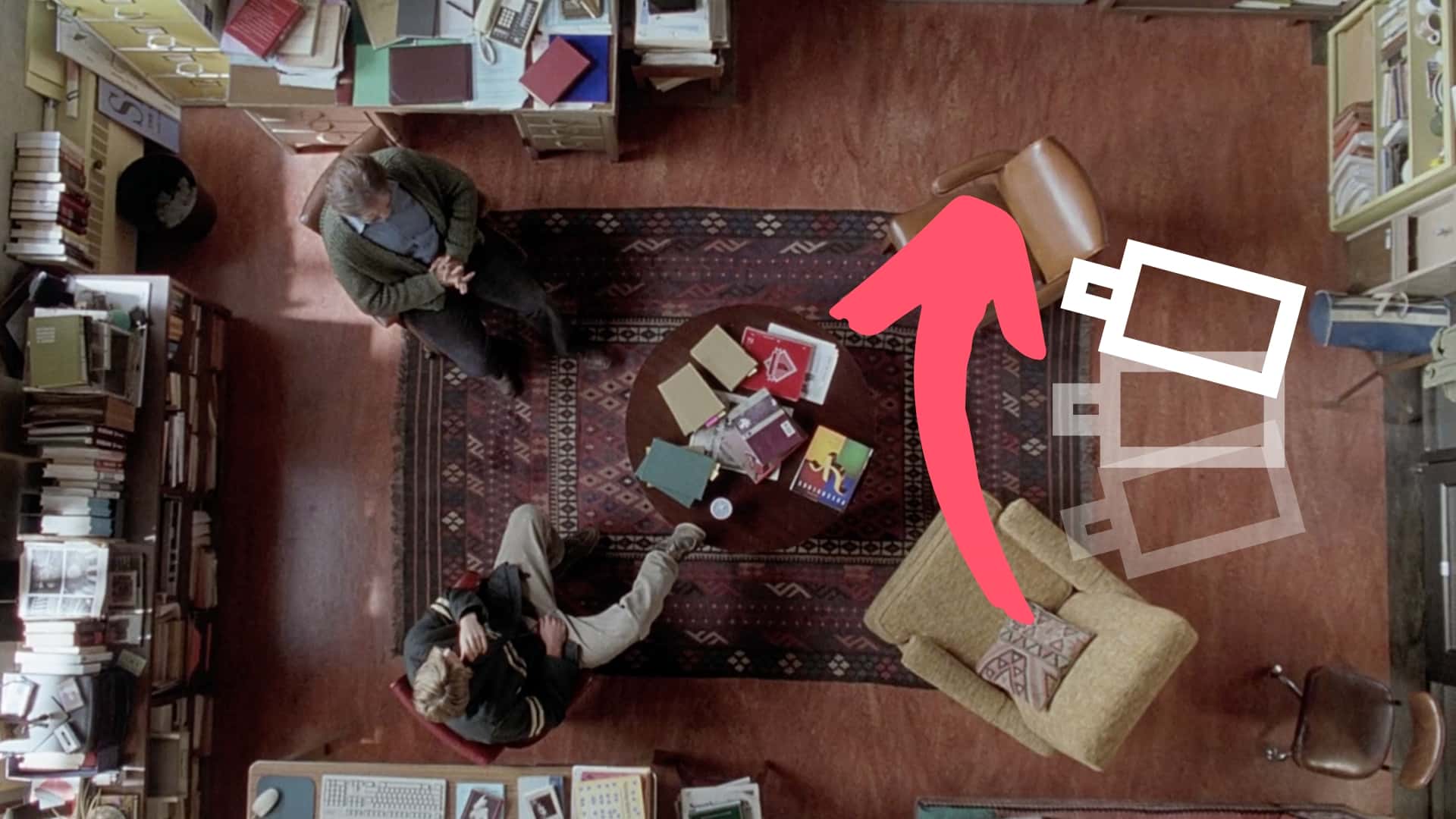How you move the camera is a sort of language, a way to communicate to the audience apart from dialogue. There are one million ways to move the camera to complement the narrative. And camera panning is just one way to speak — a simple movement that speaks volumes. So, what is a camera pan and how can it be used to speak directly to the audience? Let’s define it and look at some examples.
Camera Panning
Defining pan camera movement
If you’ve seen even one movie, you've seen a camera pan. And of all camera movement options, it is perhaps the least dynamic or interesting — but that's what makes it so useful.
A camera pan is so ubiquitous that it doesn't tend to draw the audience's attention. They remain engaged in the film, which is something most filmmakers are looking for — giving them an immersive experience.
CAMERA PAN DEFINITION
What is a camera pan?
A camera pan is horizontal movement in which the camera moves right to left from a central axis. Taken from the word "panorama," the physical position of the camera itself does not move. Instead, the panning refers to the swiveling left to right mounted on a fixed location. This differs from dolly shots in which the mounting system itself moves. Of course, a pan can also be combined with different camera movements such as dolly shots or tracking shots.
WHEN TO USE CAMERA PANNING:
- Establishes location of scene
- Tracks movement
- Elevates tension in a scene
A panning camera can be achieved with just about any camera rig. Whether it is handheld, using a dolly or crane, or even a drone. Here's a video breakdown of the various types of camera rigs, how they work, and how they add to the "feel" and look of a shot.
Ultimate Guide to Camera Gear • Subscribe on YouTube
The camera pan is just one of many types of camera movements in film. Here's a complete breakdown of each type along with their storytelling values and how they have contributed to some iconic moments in cinema history.
The Ultimate Guide to Camera Movement • Subscribe on YouTube
An Important Distinction
Pan vs. tilt
Tilting (or a tilt shot) is another basic camera move that is often confused with panning. Why? Well, while panning describes the left and right (horizontal) movement, tilting is the up and down (vertical) movement over a fixed axis.
We can only pan right or pan left. We cannot pan up or pan down. But again, we can always combine these two movements in the same shot, resulting in a "pilt" or a "tan." Just kidding, those aren't actual film terms.
Watch the video below to get a quick understanding of these two essential camera movements.
Camera Movements • Pan vs. Tilt
A pan isn't the only form of camera movement, obviously. There are a number of ways (and reasons) to move the camera. This video is just one chapter in our Filmmaking Techniques Masterclass, and it covers camera movement and all its variations in greater detail.
Camera Movements • Join Filmmaking Masterclass
Camera panning is a simple enough way to move the camera but that doesn't mean it has to be boring or unmotivated. Let's take a look at how filmmakers have used this seemingly elementary maneuver to guide the audience's eyes, reveal location or information, and create tension.
PANNING FOR LOCATION
Establish the location
A pan allows the audience to see more of the scene. Camera panning establishes the location, and also tracks the movement of the characters or objects within that location.
Here's a classic example from Antonioni's The Passenger when Nicholson's character gets his jeep stuck in the sand. We know where we are (the desert) but a slow panning shot along the horizon makes the severity of his situation perfectly clear.
Panning is ideal for revealing location
PANNING FOR Suspense
Elevate the tension
Also panning from one character to another can create more tension than a quick cut would. This type of camera movement allows the audience to experience the moment in real-time.
A slow camera pan can also delay an action and build anticipation. A fantastic example of this is in Paranormal Activity 3 when the babysitter sits alone in the kitchen.
The family has been experiencing paranormal phenomena recently so the father rigs up a camera to an oscillating fan. So, the deliberate and slow panning back and forth across the room is a really effective way to build suspense. We KNOW we're going to see something but we don't know what it will be...and we have wait for it to be revealed.
Camera panning effectively builds suspense
PANNING FOR Character
Reveal the character
A lot can be communicated about a character with a single camera pan. In this example from Boogie Nights, we get a 360-degree pan around Dirk's bedroom. The camera isn't interested in Dirk, per se, but it does want to show us his world.
The slow camera panning across his walls tells us everything we need to know about this character. In this one shot, we learn that he likes fast cars, beautiful women, rock 'n' roll, and Bruce Lee.
This is a great example of economically communicating backstory and characterization into a single shot.
Camera panning is great for introducing a character
Related Posts
UP NEXT
Explore different camera movements
We've covered the camera pan shot but there are many other camera movements to discuss. As you amass your camera movement repertoire, you will be able to amplify your visual storytelling exponentially. You're already on your way but the only question is which camera movement will you dive into next?
Showcase your vision with elegant shot lists and storyboards.
Create robust and customizable shot lists. Upload images to make storyboards and slideshows.
